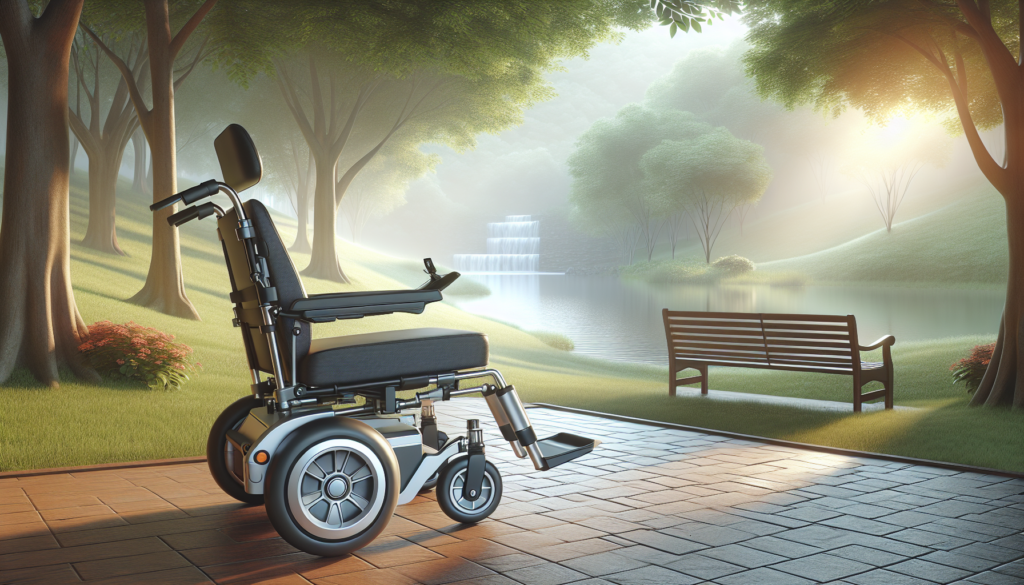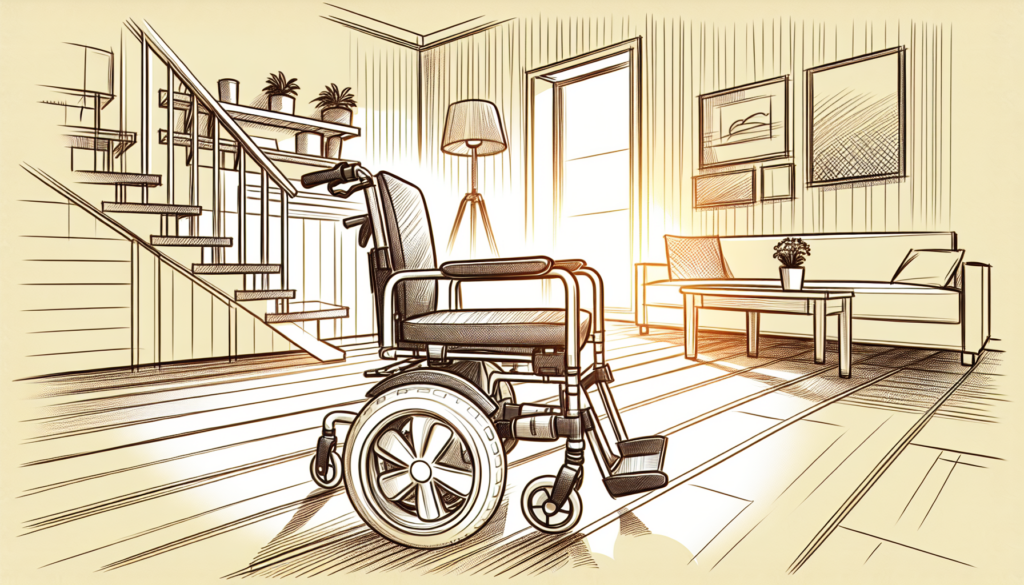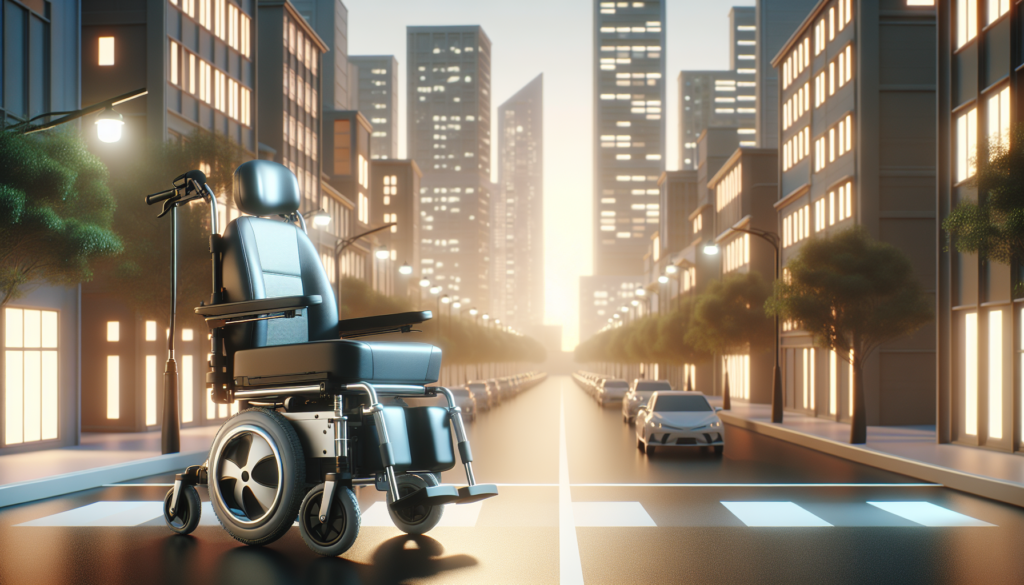
In the bustling urban landscape of Kuala Lumpur, the significance of accessibility cannot be overstated. As cities evolve, so must our approach to mobility, particularly for individuals with limited mobility. Electric wheelchairs play a transformative role in enhancing accessibility, promoting independence, and facilitating daily commutes for those navigating busy streets and crowded public spaces.
With their innovative design and technology, these electric wheelchairs empower users to conquer the challenges of urban living, enabling them to partake in social activities, work, and explore their surroundings like never before. Whether it’s a trip to a local market or commuting to work, the real-life applications of electric wheelchairs depict their profound impact on enhancing quality of life in a vibrant city like Kuala Lumpur.
Enhancing Accessibility: Navigating Kuala Lumpur’s Urban Landscape
In the heart of Kuala Lumpur, the bustling urban landscape presents unique challenges for individuals with mobility impairments. Traditional wheelchairs may pose difficulties navigating the city’s busy streets and public transport systems, making accessibility a significant concern. However, electric wheelchairs have revolutionized how users travel through these lively environments. With their ease of use, compact design, and advanced features, electric wheelchairs enable individuals to traverse crowded sidewalks, enter shops, and access public areas that were once off-limits. This enhanced accessibility empowers those with mobility challenges to participate more actively in city life, whether it’s enjoying a day out at a shopping mall or commuting to work.
Moreover, electric wheelchairs contribute greatly to the independence of users, allowing them to manage their daily commutes with confidence. For instance, individuals can now navigate the robust public transport system in Kuala Lumpur more seamlessly, easily boarding buses and trains equipped with wheelchair access. This newfound freedom not only reduces dependency on caretakers or family members but also offers opportunities for social engagement and personal growth. As electric wheelchairs continue to evolve, their role in creating a more inclusive urban environment will undoubtedly enhance the quality of life for many residents, helping to break down barriers one journey at a time.
Independence Redefined: How Electric Wheelchairs Empower Users

Electric wheelchairs are revolutionizing the way individuals in Kuala Lumpur navigate their urban environment, providing unprecedented independence and accessibility. With their compact design and advanced technology, electric wheelchairs enable users to traverse busy streets, crowded markets, and public transportation systems with ease. This newfound mobility not only fosters a sense of autonomy but also encourages those with mobility challenges to engage more actively with their community, whether it’s visiting local eateries or socializing in parks. The convenience of electric wheelchairs often means less reliance on caregivers, allowing individuals to reclaim control over their daily activities and choices.
Moreover, the integration of electric wheelchairs in Kuala Lumpur reflects the city’s commitment to inclusivity. Features such as adjustable seating and programmable controls cater to diverse user needs, enhancing comfort and utility. Real-life applications are evident as users confidently navigate through bustling areas like Bukit Bintang or Petaling Street, where accessibility can be a significant concern. By promoting independence through electric wheelchairs, Kuala Lumpur is not only improving the quality of life for its residents but also setting a benchmark for urban mobility in cities worldwide.
Real-Life Applications: Stories from Electric Wheelchair Users in Kuala Lumpur
In the bustling city of Kuala Lumpur, electric wheelchairs have become a beacon of empowerment for individuals with mobility challenges. For instance, a regular user named Aisha shares her journey of independence, emphasizing how her electric wheelchair allows her to navigate the vibrant streets effortlessly. Whether it’s commuting to work, meeting friends for coffee, or simply enjoying a day at the park, her electric wheelchair has transformed her daily life, enabling her to participate fully in her community. With its compact design and manoeuvrability, Aisha can access shops, cafes, and public transport seamlessly, experiences that were once daunting and filled with barriers.
Moreover, stories like Aisha’s are echoed by many others who rely on e-wheelchairs for daily commutes. A young artist, Rahman, talks about how his wheelchair has enabled him to attend exhibitions, connect with fellow artists, and ultimately grow his career. People like Rahman and Aisha are rewriting the narrative of mobility in Kuala Lumpur, demonstrating how e-wheelchairs not only enhance accessibility but also foster a sense of belonging in a fast-paced urban environment. Their experiences highlight the critical role these innovative mobility aids play in empowering users to embrace independence and engage more fully with the world around them.
Daily Commuting Made Easier: Electric Wheelchairs in Public Transportation
In busy urban areas like Kuala Lumpur, daily commuting poses significant challenges for individuals with mobility impairments. The utilization of electric wheelchairs has emerged as a transformative solution, enabling users to navigate public transportation systems with greater ease and autonomy. Equipped with advanced features like compact designs and responsive controls, electric wheelchairs are designed to integrate seamlessly into the urban landscape, allowing users to access buses and trains without hassle. This innovation not only empowers individuals to partake in everyday activities such as shopping, attending appointments, or socializing, but it also fosters a sense of independence that was previously hard to achieve.
The real-life applications of electric wheelchairs in Kuala Lumpur are abundant. For instance, users can now confidently travel from their homes to the nearest MRT or bus station, tackling urban obstacles like curbs and busy sidewalks with improved mobility. Furthermore, various public transport providers are adapting their vehicles to accommodate electric wheelchairs, demonstrating a commitment to inclusivity. As electric wheelchairs become more common in urban commuting, they play a crucial role in creating an accessible city, ensuring that everyone has the freedom to explore and enjoy the vibrant culture and opportunities that Kuala Lumpur has to offer.
Urban Design and Electric Wheelchairs: A Call for Inclusivity

Urban design plays a crucial role in determining how accessible a city is for everyone, particularly individuals with mobility challenges. In bustling cities like Kuala Lumpur, electric wheelchairs are transforming the urban landscape by promoting inclusivity. These adaptive mobility devices allow users to navigate through crowded streets, parks, and commercial areas with enhanced ease and independence. Modern electric wheelchairs are designed with maneuverability in mind, featuring compact sizes that can easily fit through narrow pathways and busy sidewalks. As cities strive to become more inclusive, the integration of electric wheelchairs in urban transportation systems is crucial, ensuring that everyone can participate fully in the fabric of city life.
Moreover, the positive impact of electric wheelchairs extends beyond mere mobility; they empower individuals to reclaim autonomy in their daily lives. For example, residents in Kuala Lumpur can utilize electric wheelchairs to access public transport, attend social gatherings, or simply enjoy outdoor spaces independently. This newfound freedom not only enriches the individual’s quality of life but also fosters greater community engagement and understanding. As we advocate for more inclusive urban designs, the role of electric wheelchairs becomes even more significant, enabling people with disabilities to navigate the vibrant and dynamic environment of Kuala Lumpur with confidence and ease.
Overcoming Challenges: Addressing Barriers to Electric Wheelchair Use
In a bustling metropolis like Kuala Lumpur, the challenges faced by individuals with mobility issues are significant. Traditional wheelchairs often limit accessibility, making it difficult for users to navigate busy streets, public transport, and crowded areas. However, electric wheelchairs have emerged as game changers, addressing these barriers effectively. Equipped with advanced technology and ergonomic designs, they offer enhanced maneuverability and speed, allowing users to access various urban spaces independently. As a result, people can enjoy their daily routines—whether it’s shopping, commuting to work, or socializing—without the constant reliance on assistance from others.
The real-life applications of electric wheelchairs in Kuala Lumpur serve as inspiring examples of improved accessibility and independence. For instance, users can now effortlessly traverse ramps, sidewalks, and other public infrastructure that may not have been designed with their needs in mind. Additionally, electric wheelchairs enable individuals to manage their daily commutes by adapting to the challenges posed by uneven terrains and traffic congestion. By incorporating user-friendly features such as adjustable seating and intuitive controls, electric wheelchairs empower people with mobility impairments to reclaim their independence and navigate urban environments with confidence.
Technological Advancements: The Future of Electric Wheelchairs in Urban Mobility
The advent of electric wheelchairs has significantly transformed urban mobility, particularly in bustling cities like Kuala Lumpur. These technologically advanced mobility devices are equipped with features that enhance accessibility and independence for users. With options such as improved battery life, GPS navigation, and smart technology integration, electric wheelchairs enable individuals with mobility challenges to navigate busy streets and public spaces with ease. For instance, users can conveniently plan their journeys using real-time traffic updates, making daily commutes more efficient and reliable. This improvement in technology not only empowers users but also raises awareness about the need for inclusive infrastructure in urban planning.
The future of electric wheelchairs holds great promise, particularly with the ongoing innovations in artificial intelligence and automation. These advancements may lead to even more sophisticated devices that can adapt to their environment and anticipate the needs of users, further enhancing their experience. In Kuala Lumpur’s densely populated areas, increased accessibility will foster a sense of independence and integration for individuals with mobility impairments. Real-life applications, such as seamless access to public transportation and well-designed pedestrian pathways, will contribute to a more inclusive urban environment, allowing everyone to participate fully in the city’s vibrant life.
Embracing the Future of Urban Mobility

In conclusion, electric wheelchairs are revolutionizing the way individuals navigate busy urban landscapes, particularly in vibrant cities like Kuala Lumpur. By enhancing accessibility, these innovative mobility aids empower users to independently manage their daily commutes and engage more fully in city life. Whether it’s accessing public transport, visiting local shops, or enjoying the many parks and recreational areas, the benefits of electric wheelchairs are evident in the increased participation of users in social, cultural, and economic activities, fostering a more inclusive environment for all.
This shift towards improved urban mobility is not merely about convenience; it signifies a change in societal attitudes toward disability and independence. As more people adopt electric wheelchairs, they contribute to the breaking down of barriers, both physical and attitudinal, that have long hindered mobility in urban settings. With ongoing advancements in technology by EKO Life MY and other E-Wheelchair providers, and continued support for enhancing urban infrastructure, the future looks promising for electric wheelchair users, offering even greater opportunities for independence and exploration in bustling metropolitan areas like Kuala Lumpur.

Love seeing more blogs about personal finance in Singapore
Thank you, Sarah Wong for your lovely comment! Unfortunately, it seems you might have posted your comment on the wrong blog. Our blog focuses on empowering bicycle, ebike, and escooter enthusiasts in Malaysia, rather than personal finance in Singapore. If you’re looking for personal finance advice, we can direct you to some reliable resources in Singapore. Alternatively, if you’re interested in learning more about electric bicycles or scooters, we’d be happy to assist you. Please feel free to reach out via [email protected] or +60 3-7890 3042 for more information.
Never thought about budgeting as an art, but this post opened my eyes. Sharing with friends and family now!
Dear Fernanda, we’re thrilled to hear that our post opened your eyes to the art of budgeting. We believe that financial literacy should be shared widely to make a positive impact on people’s lives. If you have any questions or need further guidance on budgeting, feel free to contact us at [email protected] or +60 3-7890 3042. We’d be happy to help.
How’s the 50/30/20 rule working out for you? Been considering applying it myself in KL
Thank you for asking Rohan! At Eko Life Malaysia, we’re more focused on providing affordable and quality e-bikes, bicycles, and escooters to the community, rather than financial planning. However, we can definitely recommend some reputable services in KL that can help with budgeting advice. If you’re interested, feel free to reach out to us at [email protected] or +60 3-7890 3042, and we can assist you in finding the right professionals.